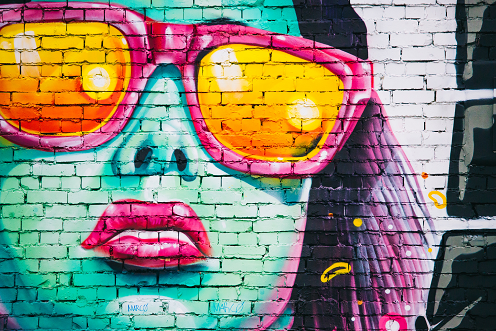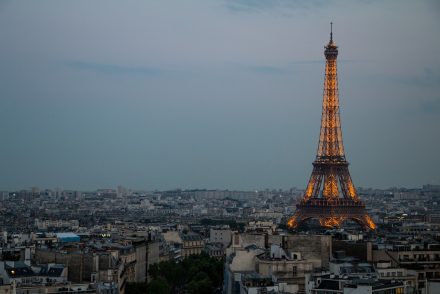Cities continuously change, and as they do, residents learn, adapt and hopefully, progress. Within these concentrated centers of human life there and people, places and experiences to discover. Sadly, COVID-19 has devastated city life. My city — Toronto — is once again under a lockdown in which we are advised to stay home except for essential trips and emergencies. Cloistered away, our lives have become quite ordinary. In fact, too ordinary!
I miss discovering the city life as I walk its avenues, explore its parks, and enter its buildings. I enjoy endless inspiration in finding spaces and places to escape the hubbub of the street. Here I can encounter the out-of-the-ordinary. Also observing creations that can challenge and prod my worldview, allowing ideas to percolate and conversations to unfold. Encountering things of beauty — considered adventurous, avant-garde, and even risqué — leads to an inexplicable joy, particularly if shared with others.
This is the role of art. It excites, piques interest, critiques, and brings people together.
Public Art — ranging from sculptures to graffiti to skyscrapers — plays an important role in sustaining city life. As one of the most accessible forms of artistic expression, it helps build community and deeper understanding of difference. Some even argue that architecture itself one of the most sophisticated forms of public art, plays a role in how cities evolve and yes, devolve. (Incidentally, if you’re into forms of brutalism architecture, I’ve been told that Toronto is a great city in which to appreciate — or is it tolerate — it.)
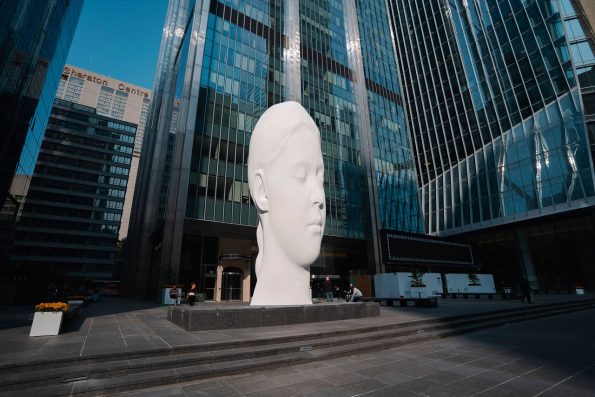
During 2020, the pandemic has killed the arts sector, starved restaurants of business, and generally gutted urban life. Shows shut down. Museums closed. Other than what one can view on TV and streaming video services, the inspiration offered by art has been quashed.
If one ventures out, the city seems unreal. Un-alive. Ghost-like individuals, masked and anonymous, walk by, avoiding eye contact; sometimes walking on the other side of the street to avoid close contact. The spectrum of humanity ordinarily found in the city life — from buskers to lineups outside theatres — no longer exists.
Build It And They Will Come
The baseball movie Field of Dreams — starring Kevin Costner — is famous for the line “build it and they will come.” For decades, property developers have faithfully lived by this mantra being the engines of urban progress that have constructed buildings to house residents, high-rises to contain office workers, and malls to entice shoppers. In turn (at least in Toronto where we have winter for half the year), labyrinths of concrete and steel have been constructed to connect these structures through subways and subterranean walkways.
But with COVID-19 everything has changed.
Condo prices have plummeted, public transport has been abandoned, and the perceived need for offices is being questioned. As much as this might be true, I hope that during The Great Reset, these construction engines also contribute to the fabric of urban life by continuing to support Public Art.
Toronto’s Year of Public Art
During 2021, the City of Toronto will celebrate the Year of Public Art. The city focuses on Public Art since the middle of the 19th Century. It now manages and maintains almost 300 pieces of outdoor art. Much of the funding for these highly accessible works comes from developers commissioning public art as part of development. It is donating land and commissioned art to the city, donating cash to the city for art on pubic lands. Whatever the mechanism, the result has been impressive. Private developers have contributed some 300 projects in Toronto over the past 30 years.
The most recent addition to Toronto’s Public Art scene is DREAMING, a massive sculpture on the public plaza at the Richmond-Adelaide Centre, a $650 million revitalization project by Oxford Properties in Toronto’s Financial District. The three-story tall art piece, created by Spanish artist Jaume Plensa, is the portrait of a young girl. It is a quiet contemplation, juxtaposed against the busyness of the adjacent streets.
More Outlandish, Please
The movie Field of Dreams was essentially about passion and doing something outlandish: building a baseball diamond in the middle of an Iowa corn field. An Old English word meaning ‘not native’ or ‘from a foreign country’ outlandish describes things that appear out of place or out of the ordinary.
I say, bring on the outlandish!
Torontonians speak over 100 languages. The city life here is a cultural mishmash, a mixing pot of cuisines, entrepreneurial minds, and creative energies. DREAMING is the latest addition to an array of artworks scattered throughout the city created by Canadians of various backgrounds, as well as non-resident artists.
Some of my favorite public art in Toronto (shown to me by a Kiwi friend who used to be based in the city), are:
“Two Circles” (333 Bay St.) by Canadian artist and curator Micah Lexier;
“Tembo, Mother of Elephants” (Commerce Court) by Derrick S. Hudson;
“Businessman” (181 Bay St.) by William McElcheran; and
The TD Gallery of Indigenous Art (79 Wellington St. W.), a rotating exhibition space representing regions across Canada. Check out the self-guided tour.
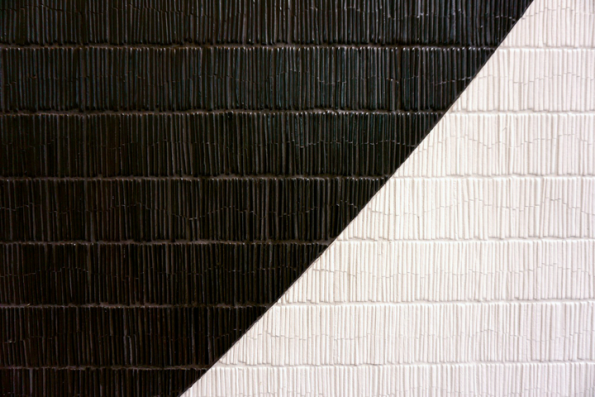
Public art allows for the expression of various cultural voices, increases understanding of different peoples, helps our appreciation of history, and adds value to different parts of the city. By escaping our houses and taking the time to observe and appreciate such installations, we can each find inspiration, and if we’re lucky, maybe experience awe. At the least, public art is an effective means of cultural education, and if we pay attention, it can even connects us to others. As Seth Godin writes in his most recent book The Practice:
“Culture is a conspiracy. It’s the voluntary engagement of humans in search of connection and safety.”
Christmas In The City
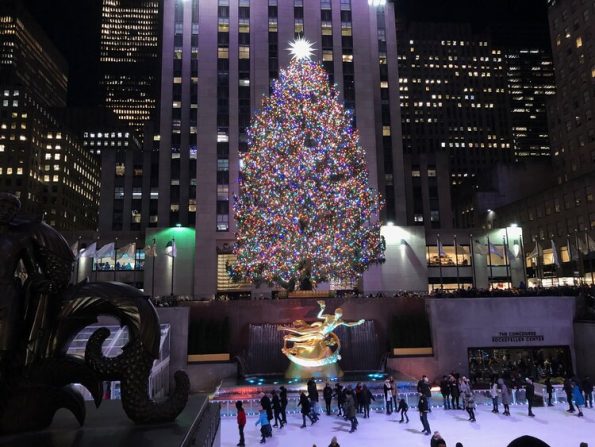
The Rockefeller Centre Christmas Tree in New York City is an iconic, smile-inducing sight and an example of public art that speaks to Godin’s description of culture. The illumination enhances the city, drawing thousands of locals and visitors to Midtown Manhattan. Describing itself as “…a gathering place and reflection of what is happening in the world” this centerpiece of the Season is an unforgettable experience, especially with the skating rink at the base of the tree.
Struggling as we are through the pandemic, we all need more joy-inspiring experiences. Places that excite us and connect us. Artistry that dazzles and brings smiles to faces — young and old — and that even challenges perspectives on the world. Such creations enhance our sense of community, enrich city life, and drive tourism (an important industry that will come raging back once the full brunt of COVID-19 has subsided).
Toronto’s Christmas tree — located on Nathan Phillips Square at City Hall — was lit up by Mayor John Tory in November and in early December, the Canadian Government kicked off Christmas Lights Across Canada on Parliament Hill in the nation’s capital. According to Prime Minister Trudeau:
“This beautiful display also reminds us that there is light at the end of the tunnel, that we will get through this global COVID-19 pandemic, and that we must continue to stand together. Our values of unity and of being there for one another, and our confidence in the future, will allow us to continue working to build an even better Canada.
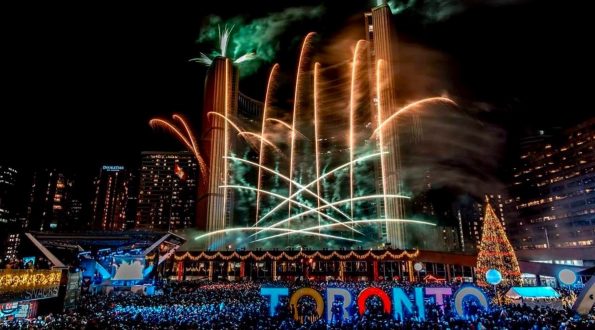
When in Toronto, discover the events at Toronto Events near you.
Addressing A Mental Health Emergency
We are living through strange times where buildings sit empty and households self-isolate. Such isolation has created a number of mental health challenges across society, according to Centre for Addiction and Mental Health (CAMH). Apart from the disproportional impact of the pandemic on women and parents, the arts community has been devastated. Organizations like the Canada Council for the Arts are doing what they can to help artists, but more needs to be done.
One piece of encouraging news comes from Ravi Jain, founding artistic director of Why Not Theatre, who recently spoke at The Walrus Talks at Home: Living Better virtual event. In his short talk, he touched on Project Space, an innovative pilot project undertaken through cross-sector partnerships that offered artists empty spaces to enliven and use for artistic purposes. Some encouraging results came from the project involving more than 50 artists who participated in.
According to Jain:
“Artists reignite neighborhoods, boost economic growth, and make Toronto a more communal and livable place. As we continue to grow and develop Toronto, we …(need to find)… cheaper, more innovative, and more sustainable ways to support them. Giving artists access to free creative space will promote the creation of more art …(and)…help to ensure that these artists continue making art in the city, and not somewhere else.”
COVID has increased the economic precariousness of most artists. It has also caused us to rethink how artists might play a role in recovering from the pandemic. Let’s continue to invest in those people and organizations that ignite communities, activate spaces, and unlock the potential of cities and the city life. Their creativity can provide economic and mental health support to create more vibrant cities.
I therefore encourage you to put on a mask and head out to soak in the sights. Stay at a respectful distance from one another of course, as there is so much TBD.
Andrew Cole helps organizations translate jargon and brand values into palatable messages and relatable stories as part of developing and delivering integrated corporate communications. Having lived and worked in South Africa and Canada, Andrew currently resides in Toronto, Ontario with his wife and son. T: @mistercole
Chillwall AI is a Toronto-based global Desire Prediction AI software technology provider that uses its Emotion AI to personalize your city discovery experience.
